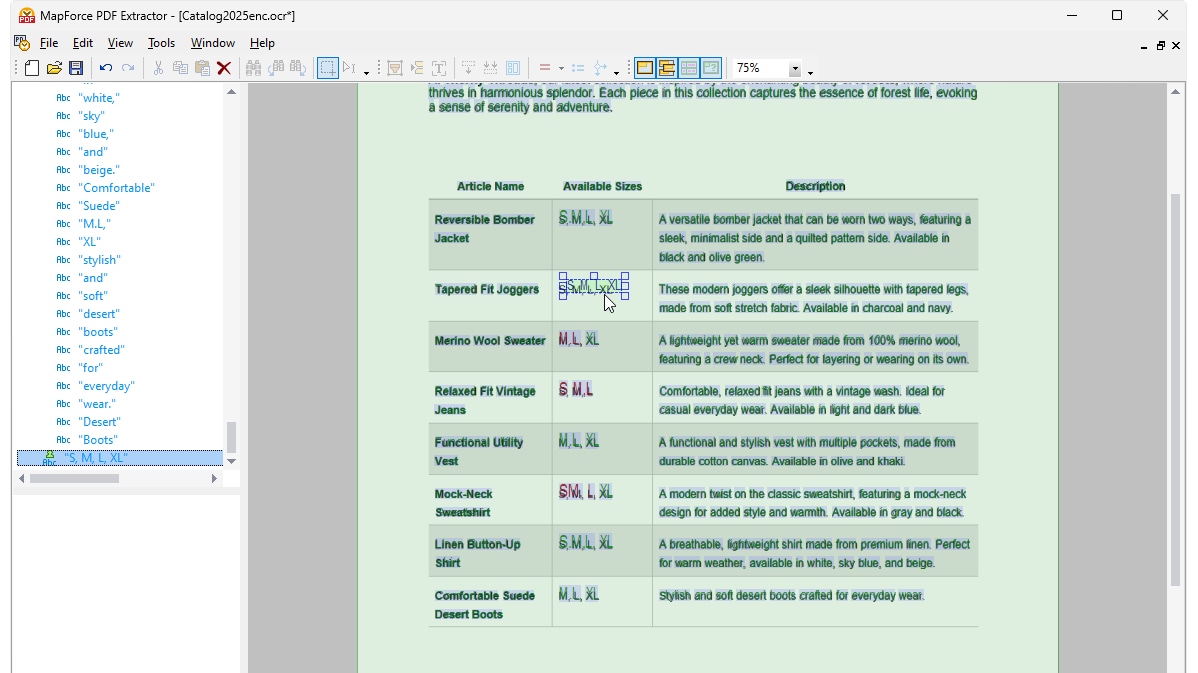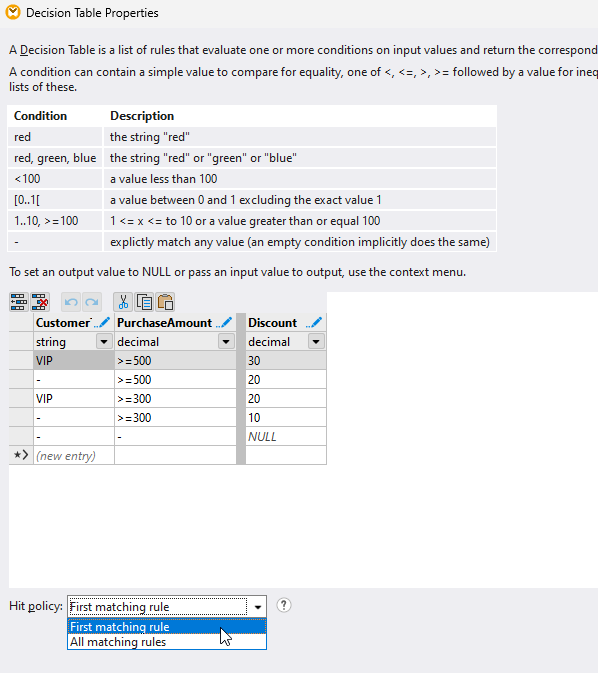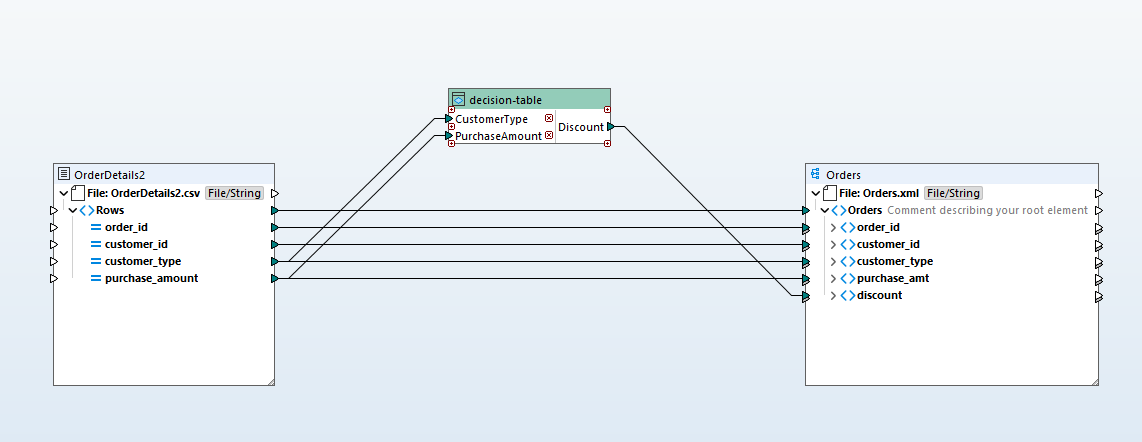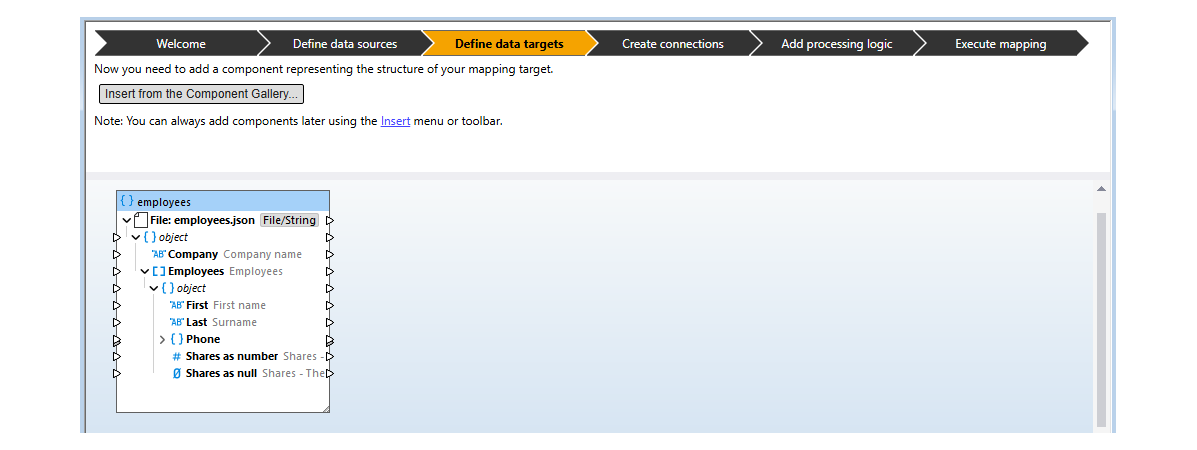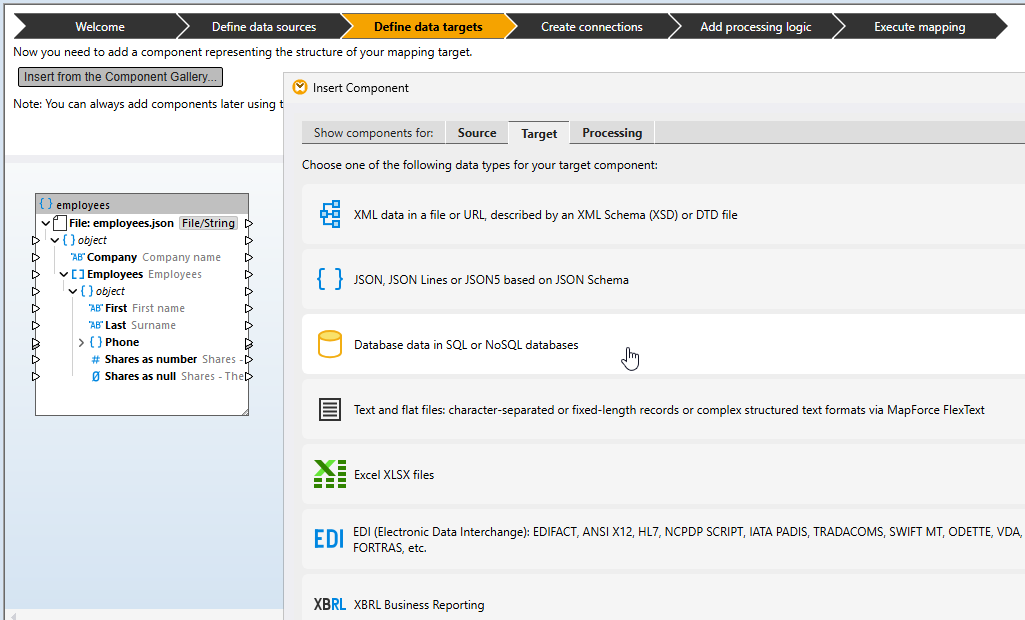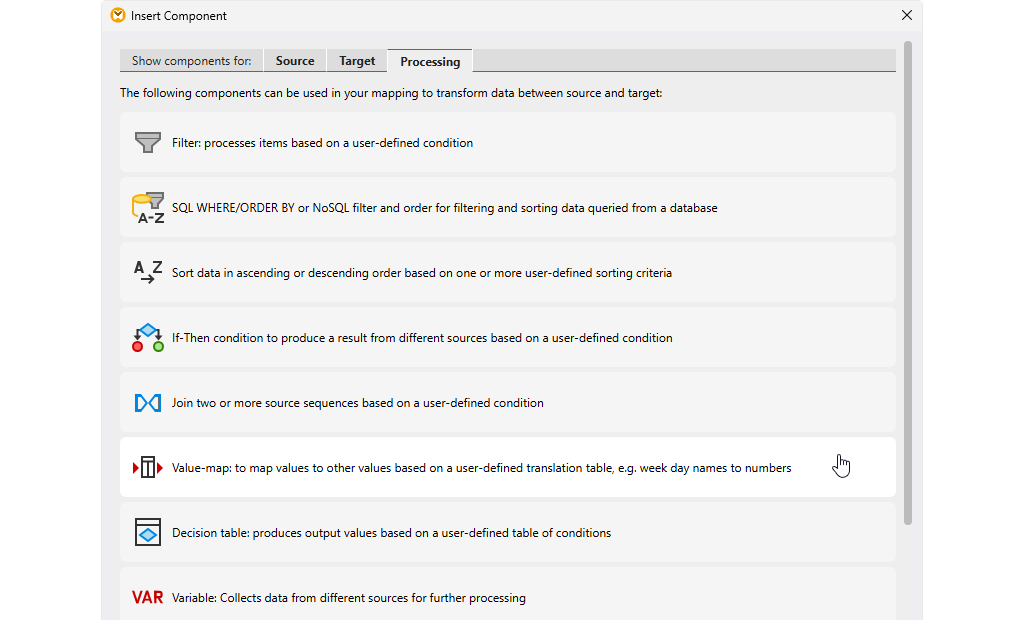| MapForce® 2026 (October 21, 2025) | Enterprise | Professional | Basic | |||
|---|---|---|---|---|---|---|
| Support for OCR processing of PDF files | ||||||
| Support for decision tables | ||||||
| Guide bar for new users | ||||||
| Dialog for adding new components to a mapping | ||||||
| Support for SWIFT 2025, EDIFACT 2024A, EANCOM 2002 | ||||||
| Java Classpath support for deploying mappings to MapForce Server and FlowForce Server | ||||||
| Support for Firebird 5.0 | ||||||
| Support MariaDB 11.4 and 11.8 | ||||||
| Support for PostgreSQL 17 | ||||||
| Support for MongoDB 8 | ||||||
| Support for Visual Studio 2026 Insiders | ||||||
| Support for Eclipse 4.34, 4.35, 4.36, 4.37 | ||||||
| Support for Windows Server 2025 |
